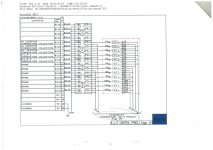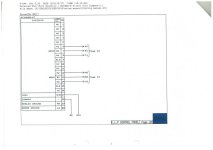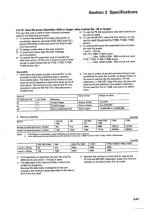Hi
I have attached files.
On page 1, PT are temperature sensors connected to various tanks, RT13-16 are single contact relays and B110-11F are PLC addresses (FUJI PLC output module NC1Y32T05P1).
As observed PT 1A-6A their leads shorted altogether. So are PT 7A-12A, PT 1B-6B, PT 7B-12B & PT 1C-6C, PT 7C- 12C. They are now compressed to A1 (PT 1A-7A), A2 (PT 7A-12A), B1 (PT 1B-6B), B2 (PT 7B-12B), C1( PT 1C-6C), C2 (PT 7C-12C).
These are now connected to (see page 2) the temp. module unit NC1AX02-PT (which unfortunately I cannot find a manual).
I do not understand this connection. Can somebody please help me analyze.
Erika


I have attached files.
On page 1, PT are temperature sensors connected to various tanks, RT13-16 are single contact relays and B110-11F are PLC addresses (FUJI PLC output module NC1Y32T05P1).
As observed PT 1A-6A their leads shorted altogether. So are PT 7A-12A, PT 1B-6B, PT 7B-12B & PT 1C-6C, PT 7C- 12C. They are now compressed to A1 (PT 1A-7A), A2 (PT 7A-12A), B1 (PT 1B-6B), B2 (PT 7B-12B), C1( PT 1C-6C), C2 (PT 7C-12C).
These are now connected to (see page 2) the temp. module unit NC1AX02-PT (which unfortunately I cannot find a manual).
I do not understand this connection. Can somebody please help me analyze.
Erika








